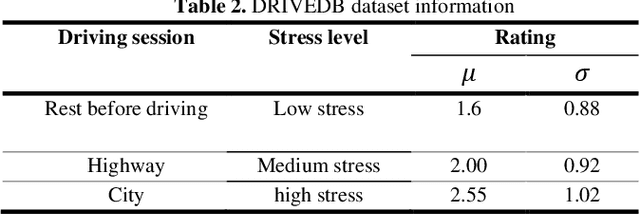Mohammad Naim Rastgoo
Robust Emotion Recognition via Bi-Level Self-Supervised Continual Learning
May 19, 2025Abstract:Emotion recognition through physiological signals such as electroencephalogram (EEG) has become an essential aspect of affective computing and provides an objective way to capture human emotions. However, physiological data characterized by cross-subject variability and noisy labels hinder the performance of emotion recognition models. Existing domain adaptation and continual learning methods struggle to address these issues, especially under realistic conditions where data is continuously streamed and unlabeled. To overcome these limitations, we propose a novel bi-level self-supervised continual learning framework, SSOCL, based on a dynamic memory buffer. This bi-level architecture iteratively refines the dynamic buffer and pseudo-label assignments to effectively retain representative samples, enabling generalization from continuous, unlabeled physiological data streams for emotion recognition. The assigned pseudo-labels are subsequently leveraged for accurate emotion prediction. Key components of the framework, including a fast adaptation module and a cluster-mapping module, enable robust learning and effective handling of evolving data streams. Experimental validation on two mainstream EEG tasks demonstrates the framework's ability to adapt to continuous data streams while maintaining strong generalization across subjects, outperforming existing approaches.
Indoor PM2.5 forecasting and the association with outdoor air pollution: a modelling study based on sensor data in Australia
May 13, 2024



Abstract:Exposure to poor indoor air quality poses significant health risks, necessitating thorough assessment to mitigate associated dangers. This study aims to predict hourly indoor fine particulate matter (PM2.5) concentrations and investigate their correlation with outdoor PM2.5 levels across 24 distinct buildings in Australia. Indoor air quality data were gathered from 91 monitoring sensors in eight Australian cities spanning 2019 to 2022. Employing an innovative three-stage deep ensemble machine learning framework (DEML), comprising three base models (Support Vector Machine, Random Forest, and eXtreme Gradient Boosting) and two meta-models (Random Forest and Generalized Linear Model), hourly indoor PM2.5 concentrations were predicted. The model's accuracy was evaluated using a rolling windows approach, comparing its performance against three benchmark algorithms (SVM, RF, and XGBoost). Additionally, a correlation analysis assessed the relationship between indoor and outdoor PM2.5 concentrations. Results indicate that the DEML model consistently outperformed benchmark models, achieving an R2 ranging from 0.63 to 0.99 and RMSE from 0.01 to 0.663 mg/m3 for most sensors. Notably, outdoor PM2.5 concentrations significantly impacted indoor air quality, particularly evident during events like bushfires. This study underscores the importance of accurate indoor air quality prediction, crucial for developing location-specific early warning systems and informing effective interventions. By promoting protective behaviors, these efforts contribute to enhanced public health outcomes.
ECG-Based Driver Stress Levels Detection System Using Hyperparameter Optimization
Jan 01, 2021



Abstract:Stress and driving are a dangerous combination which can lead to crashes, as evidenced by the large number of road traffic crashes that involve stress. Motivated by the need to address the significant costs of driver stress, it is essential to build a practical system that can classify driver stress level with high accuracy. However, the performance of an accurate driving stress levels classification system depends on hyperparameter optimization choices such as data segmentation (windowing hyperparameters). The configuration setting of hyperparameters, which has an enormous impact on the system performance, are typically hand-tuned while evaluating the algorithm. This tuning process is time consuming and often depends on personal experience. There are also no generic optimal values for hyperparameters values. In this work, we propose a meta-heuristic approach to support automated hyperparameter optimization and provide a real-time driver stress detection system. This is the first systematic study of optimizing windowing hyperparameters based on Electrocardiogram (ECG) signal in the domain of driving safety. Our approach is to propose a framework based on Particle Swarm Optimization algorithm (PSO) to select an optimal/near optimal windowing hyperparameters values. The performance of the proposed framework is evaluated on two datasets: a public dataset (DRIVEDB dataset) and our collected dataset using an advanced simulator. DRIVEDB dataset was collected in a real time driving scenario, and our dataset was collected using an advanced driving simulator in the control environment. We demonstrate that optimising the windowing hyperparameters yields significant improvement in terms of accuracy. The most accurate built model applied to the public dataset and our dataset, based on the selected windowing hyperparameters, achieved 92.12% and 77.78% accuracy, respectively.
 Add to Chrome
Add to Chrome Add to Firefox
Add to Firefox Add to Edge
Add to Edge